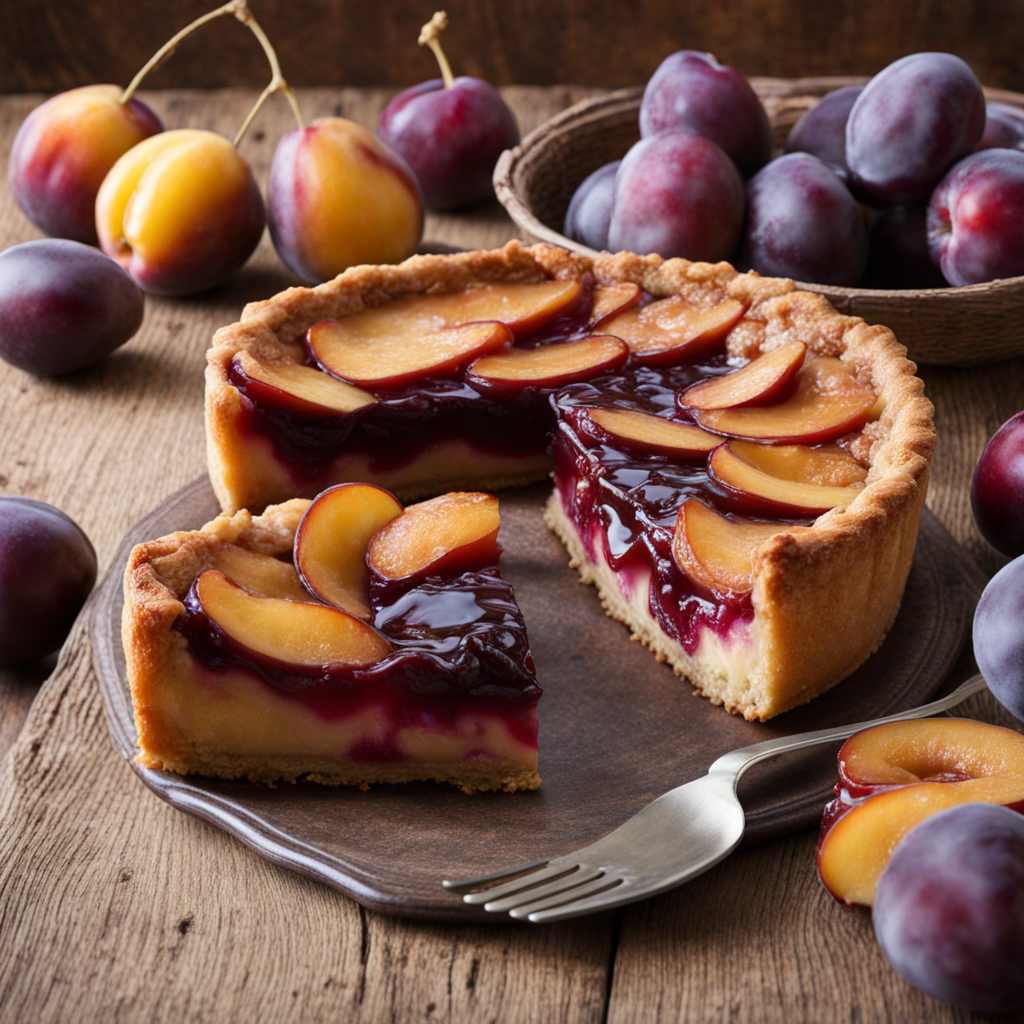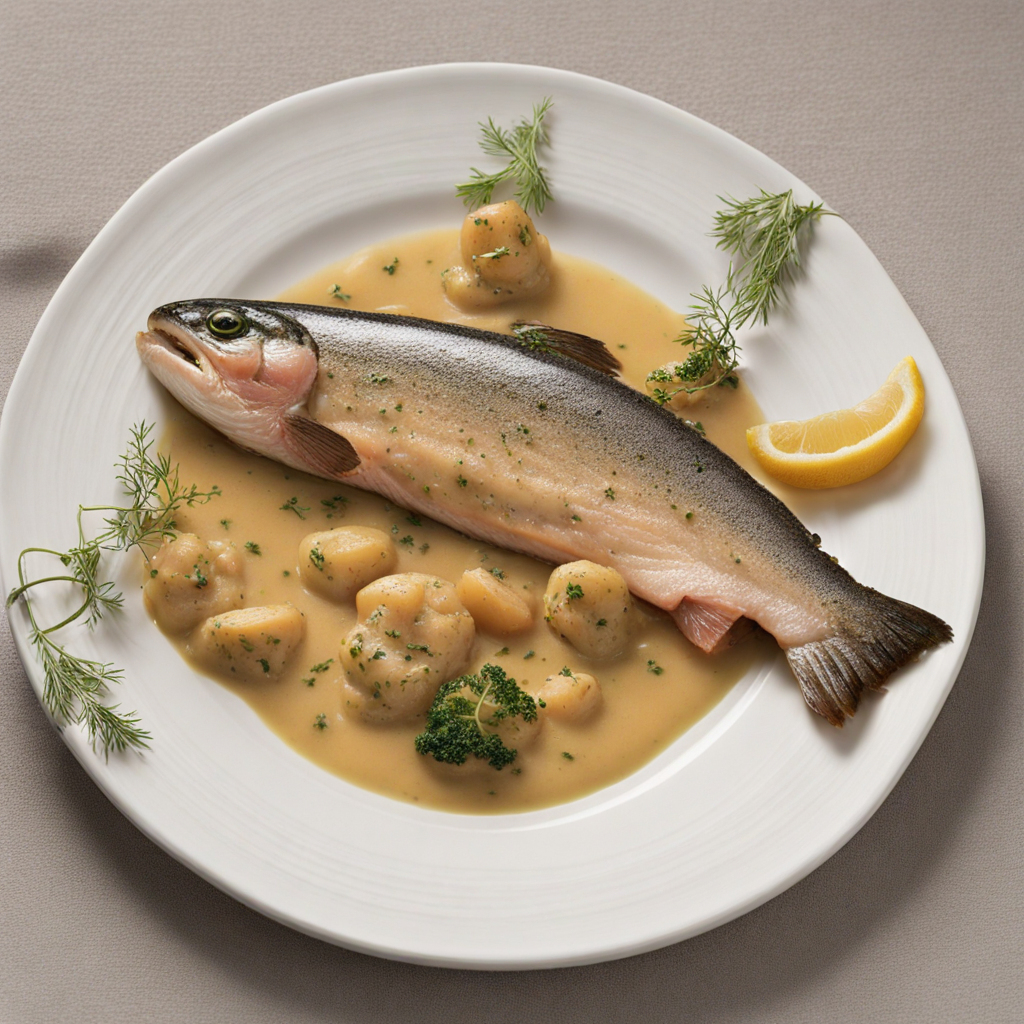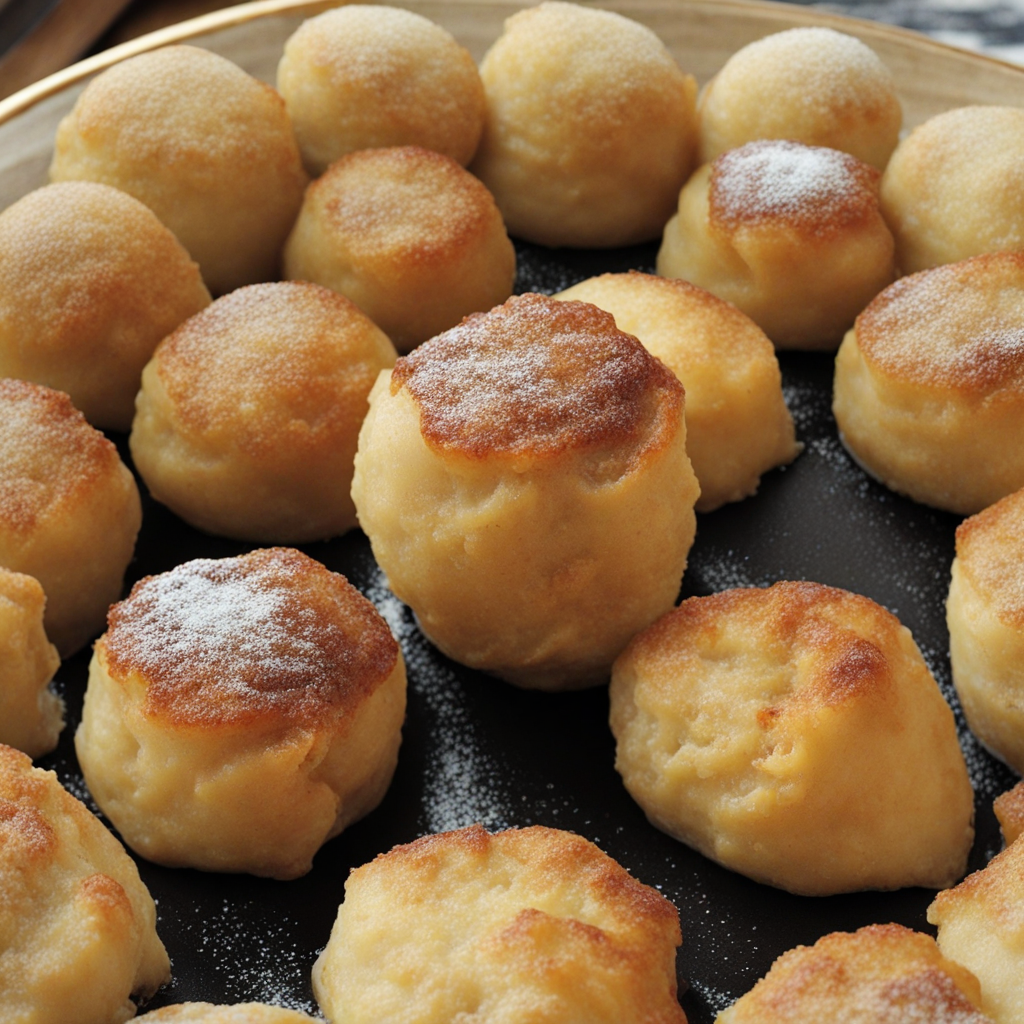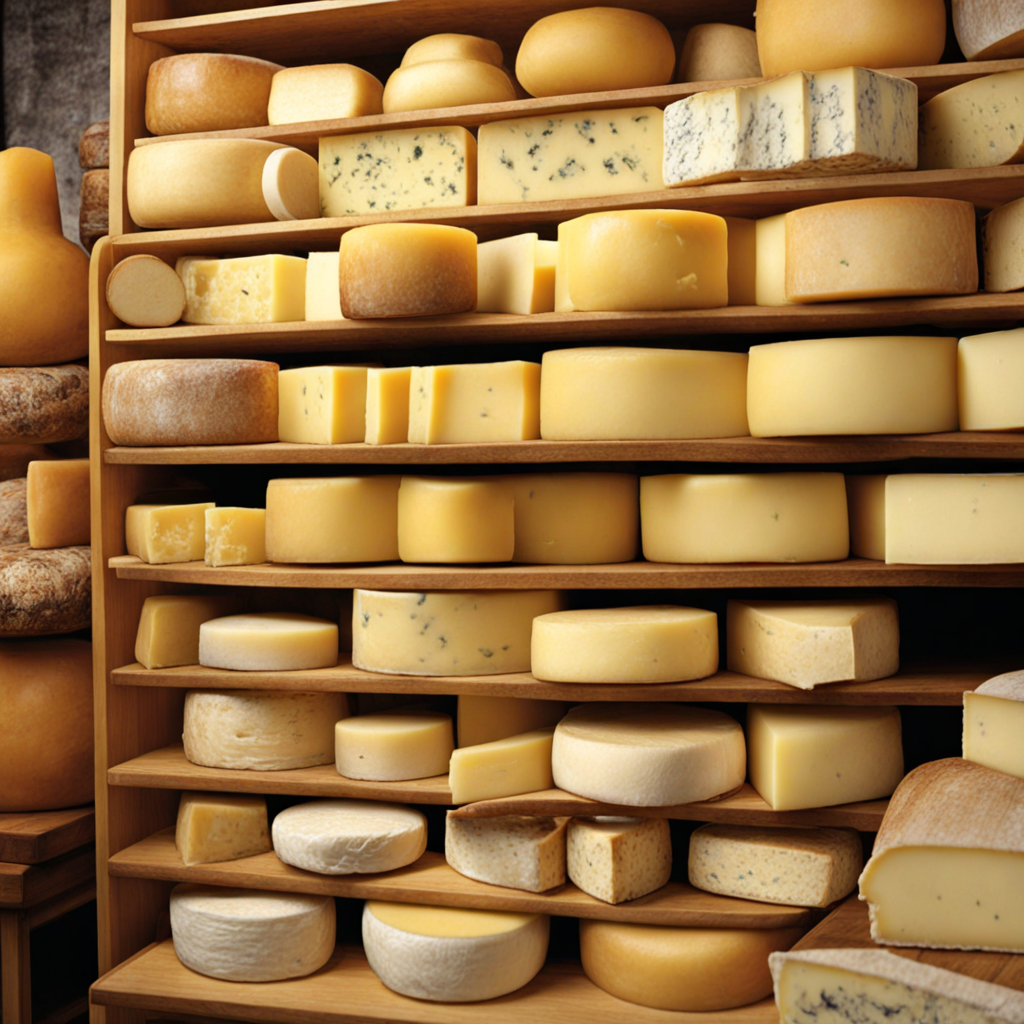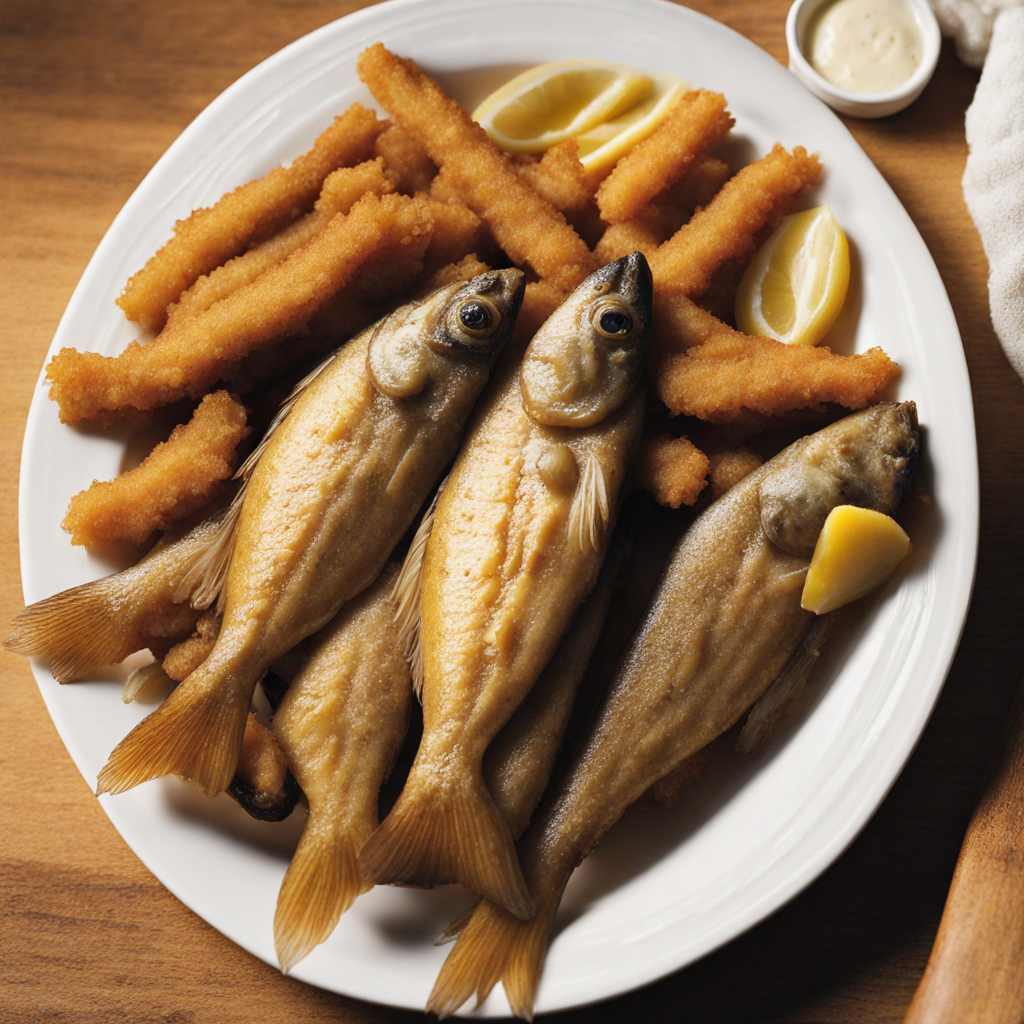Quetschentaart
Quetschentaart, a delightful traditional pastry from Luxembourg, is a must-try for anyone looking to explore the rich flavors of this small European nation. This delectable tart is primarily made with a buttery, flaky crust that serves as the perfect base for its sweet filling. The star ingredient, quetschen, which are small, juicy plums native to the region, infuses the tart with a vibrant sweetness and a hint of tartness. The combination of the tender crust and the luscious fruit creates a harmonious balance that is sure to please the palate. The preparation of Quetschentaart is an art in itself, as it involves layering the plums in a visually appealing manner. The fruit is often sprinkled with a touch of sugar and sometimes a dash of cinnamon, enhancing its natural flavors while adding a warm, aromatic quality. As the tart bakes, the plums soften and release their juices, which meld with the buttery crust, resulting in a mouth-watering aroma that fills the kitchen. Each bite is a celebration of texture, with the crisp crust giving way to the succulent, jam-like filling. Best enjoyed fresh and slightly warm, Quetschentaart is often served as a dessert or a sweet snack with a dollop of whipped cream or a scoop of vanilla ice cream. This delightful tart not only showcases the culinary traditions of Luxembourg but also highlights the importance of seasonal ingredients, as quetschen are typically harvested in late summer and early fall. Whether you’re savoring it at a local bakery or trying your hand at making it at home, Quetschentaart is an enchanting experience that invites food lovers to discover the authentic tastes of Luxembourg.
How It Became This Dish
The Rich History of Quetschentaart: Luxembourg's Plum Pie Nestled in the heart of Europe, the Grand Duchy of Luxembourg boasts a culinary heritage that reflects its complex history and cultural tapestry. Among its most beloved desserts is Quetschentaart, a delectable plum tart that has become a symbol of Luxembourgish gastronomy. This engaging history of Quetschentaart delves into its origins, cultural significance, and development over time, illustrating how a simple dish can embody a nation’s spirit. #### Origins of Quetschentaart Quetschentaart, which translates to "plum tart" in Luxembourgish, is primarily made with quetschen, the local term for the specific variety of plums known as damsons or greengages. These small, sweet, and slightly tart fruits thrive in the temperate climate of Luxembourg, where they have been cultivated for centuries. The origins of Quetschentaart can be traced back to the rural communities of Luxembourg, where foraging and fruit cultivation were commonplace. The earliest forms of this tart can be linked to traditional European baking practices, where seasonal fruits were often used to create desserts that celebrated the harvest. As plums became abundant in late summer and early autumn, home bakers would make use of this bountiful fruit by creating tarts that not only showcased the flavors of the quetschen but also provided a way to preserve the harvest for the colder months ahead. #### Cultural Significance Quetschentaart is more than just a delicious dessert; it holds a special place in Luxembourgish culture and identity. It is often served during family gatherings, festive occasions, and local celebrations, making it a staple on Luxembourgish tables. The tart evokes nostalgia and a sense of belonging, reminding Luxembourgers of their roots and the agricultural traditions that have shaped their culinary landscape. Moreover, Quetschentaart symbolizes the communal spirit of Luxembourg. It is often made in large batches to be shared among friends and family, reinforcing social bonds. Local bakeries and home cooks alike take pride in their unique recipes, which may include variations in pastry, spice, and presentation. This sharing of recipes and techniques reflects the intergenerational transmission of culinary knowledge, a vital aspect of Luxembourg’s cultural heritage. #### Development Over Time The development of Quetschentaart reflects broader historical and social changes in Luxembourg. In the 19th century, as Luxembourg began to industrialize, urbanization altered food production and consumption patterns. Many rural communities transitioned into cities, and traditional recipes adapted to the new urban lifestyle. The tart became more widely recognized beyond the rural kitchens, as it found its way into patisseries and cafés, catering to a growing urban population. The post-World War II era brought significant changes to Luxembourg’s identity, with increased immigration and globalization. As diverse cultures converged, they influenced Luxembourg’s culinary scene, introducing new flavors and cooking techniques. Quetschentaart, however, remained a steadfast symbol of Luxembourgish tradition, cherished for its simplicity and connection to local ingredients. In recent decades, the farm-to-table movement has rekindled interest in traditional foods like Quetschentaart. With a renewed focus on sustainable agriculture and local sourcing, many bakers now emphasize the importance of using fresh, organic plums and traditional baking methods. This revival has not only helped preserve the tart’s authenticity but also promoted awareness of Luxembourg’s rich agricultural practices. #### Ingredients and Preparation At its core, Quetschentaart is a straightforward yet delightful creation made with a few key ingredients. The base typically consists of a buttery, flaky pastry—often a shortcrust dough—that serves as a canvas for the star ingredient: the quetschen. The plums are usually halved and pitted, arranged artfully within the pastry shell, and then sprinkled with sugar, cinnamon, and sometimes a hint of lemon zest to enhance their natural sweetness. While the traditional recipe is beloved, variations have emerged over time. Some bakers incorporate a custard filling or a sprinkling of ground almonds to add richness to the tart. Others may opt for a crumb topping, creating a delightful contrast in texture. Regardless of the variation, the essence of Quetschentaart remains intact, celebrating the humble plum and the skills of the baker. #### Quetschentaart in Contemporary Luxembourg Today, Quetschentaart enjoys a renaissance as part of Luxembourg’s culinary heritage. It has become a staple at local festivals, such as the annual “Fête de la Gastronomie,” where chefs showcase traditional dishes alongside modern interpretations. Visitors to Luxembourg are often encouraged to seek out this iconic dessert, which can be found in bakeries, restaurants, and even at family gatherings. In recent years, Quetschentaart has also crossed borders, appearing in Luxembourgish-themed pop-up events and culinary festivals across Europe. This has allowed the tart to gain international recognition, boosting interest in Luxembourg’s gastronomic traditions. Social media platforms have played a significant role in this promotion, with food enthusiasts sharing recipes, photos, and stories about their experiences with Quetschentaart. #### Conclusion Quetschentaart is more than just a dessert; it is a representation of Luxembourg’s cultural identity, agricultural heritage, and communal spirit. From its humble origins in rural kitchens to its place on modern dining tables, this plum tart has evolved while retaining its significance in Luxembourgish society. As local bakers continue to celebrate and innovate upon traditional recipes, Quetschentaart remains a beloved symbol of Luxembourg—a testament to the enduring connection between food, culture, and community. In every bite, one can taste not just the sweetness of the plums but also the rich history and vibrant culture of this small yet remarkable nation.
You may like
Discover local flavors from Luxembourg


